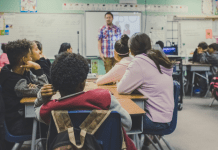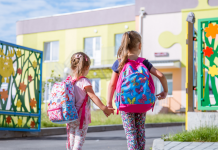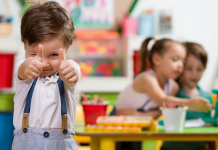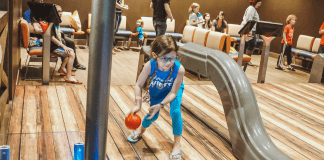There’s lots of lingo and jargon out there when it comes to education today, and the best way for parents to stay up-to-date is to stay in-the-know!
As parents, we work our hardest to ensure our kids have positive experiences when it comes to school and learning. With all the advances and technology out there, stepping into a classroom these days can be quite a different experience than it was 10 or 20 years ago.
Education is evolving along with society, so it’s no wonder that what may have been the norm during our own years in the classroom has fallen a bit to the wayside. The jobs that will exist when our kids hit the workforce and/or the technology and methods used to complete the jobs that exist today are likely to look quite different. This plays a large role in why what’s occurring in today’s classrooms is taking on a different look too.
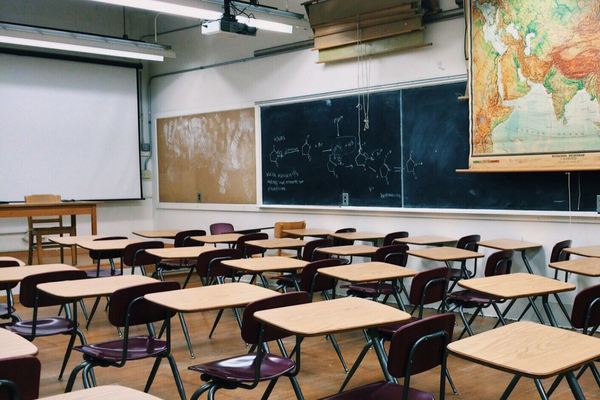 As parents, the last thing that needs to happen is for us to feel out of the loop or intimidated by new programs and practices that are occurring in schools today. After over 20 years in the field of education, I’ve had a front row seat to a lot of these changes, and it doesn’t have to be overwhelming. Part of being in the know and helping our kids embrace the new normal is educating ourselves.
As parents, the last thing that needs to happen is for us to feel out of the loop or intimidated by new programs and practices that are occurring in schools today. After over 20 years in the field of education, I’ve had a front row seat to a lot of these changes, and it doesn’t have to be overwhelming. Part of being in the know and helping our kids embrace the new normal is educating ourselves.
Here’s a quick guide to 10 newer methods and practices that may be found in today’s classroom.
- Blended Learning– Lots of definitions exist for this one. At its most foundational definition, blended learning is the incorporation of online and traditional methods of teaching. The online elements are used to enhance what’s already occurring in the classroom and make information, investigation, and learning more accessible. It shouldn’t look like kids sitting in front of a computer with no teacher guidance or interaction. It should look like using technology to cultivate deeper learning experiences.
- Project-Based Learning– The goal of this method is to create more real-life experiences for students. Students are given a real-life problem, challenge, situation, etc. and spend time investigating solutions and/or building their understanding of its complexities. As kids explore, they are guided to utilize science, math, social studies, language arts, and/or any other subject-related skills that may pertain. Life isn’t all about made-up scenarios, so why should that be how kids learn?
- Personalized Learning– When personalized learning is occurring, the strategies, lessons, and resources focus on the learning needs, interests, and cultural backgrounds of each individual student. This will look like lots of kids doing different things at different levels to cover similar concepts. This practice is anything but cookie cutter and meets every student at his/her current entry point and uses personal interests for engagement.
- Flexible Classrooms/Seating– Many classrooms have definitely taken on a new appearance that is far different than the straight rows and desks often equated with school. In flexible settings, there are a variety of seating options and learning areas. Reading corners and science discovery stations may be a part of the classroom. Your kids may be sitting on beanbag chairs, exercise balls, couches, or rugs. They may be working on tables, standing desks, lap desks, or in large open areas. The flexible options are endless and allow for increased comfort, accessibility, and function when it comes to effectively utilizing and reorganizing spaces for learning.
- VR/AR– Virtual and Augmented Reality aren’t just added attractions at museums and amusement parks anymore. VR and AR have become handheld technologies, and many teachers are cashing in on their usage. Kids are taking virtual field trips and exploring faraway lands with their own eyes. The addition of augmented reality lets kids view and manipulate models and objects in any area where learning occurs. By using handheld devices with compatible VR/AR apps and programs, items that used to be found in textbooks and on computer screens are now coming to life.
- Gradeless Classrooms– This one can be hard for many parents to understand. No grades must mean a lazy teacher that isn’t doing any work. In reality, a gradeless classroom is the exact opposite. There’s no arbitrary and subjective point system that places a limit on learning. There is still accountability, but it’s no longer reported by a letter or a set of points. Learning goals are set and mastered, but students aren’t putting an end goal to the learning when a desired point total is reached or giving up when a score is unattainable. Grades are replaced by valuable, descriptive feedback and intrinsic motivators.
- Formative/Summative Assessments– These are two terms used to refer to the activities students complete during the learning process and the activities that report their levels of understanding. Formative assessments occur frequently and should be coupled with valuable feedback. These are more of the daily activities and teacher check-ins/checkpoints. These assessments are where students form their understanding of concepts. Summative assessments are the opportunities students are given to showcase their learning. These can be traditional tests/quizzes, projects, speeches, etc. If grades are in use in the classroom, summatives make up the majority, if not all, of the reported results. There is no penalty for the bumps in the road that may occur as long as the final destination is reached.
- Makerspaces– These may be dedicated spaces in a school or classroom, or they may be mobile units. Makerspaces can often be referred to as Wonderspaces or Tinker Labs too. These are areas where creativity flourishes as kids construct, destruct, investigate, and explore with a variety of available resources. Makerspace materials can be very elaborate kits and tools for creating, or a collection of simple items that allows students to imagine and devise workable objects and creations from everyday materials. Lots of problem solving, critical thinking, and collaboration occur in these spaces.
- STEM/STEAM– Lots of toys are touted as being STEM (Science, Technology, Engineering, & Mathematics) or STEAM (Science, Technology, Engineering, Art, & Mathematics) related. Many of these popular toys will also be found on classroom shelves, but there are many lessons and activities that will also have this focus. The incorporation of more STEM/STEAM activities and the thinking processes related to these fields will be hugely beneficial when kids go to enter the ever-changing, future workforce.
- Hour of Code– While Hour of Code is a specific program for teaching coding skills to students, I hope beyond hopes that you are seeing or hearing about coding lessons, activities, programs, games, etc. from your kids or their teachers. Coding and programming concepts are becoming essential elements within the jobs of today. Just imagine the need for it in the jobs of tomorrow that are likely to be even more technology dependent.
The new look of education doesn’t need to have parents pining for the good old days where everything was paper and pencil simple and reviewed with flashcards. Today’s classrooms are preparing kids with skill sets to utilize with whatever they may encounter in the future. It’s all about helping our kids become independent thinkers and doers by giving them the tools to navigate whichever paths they may choose. As a teacher, but more importantly, as a momma, a big thank you to all those teachers and schools that are moving forward and embracing change!





